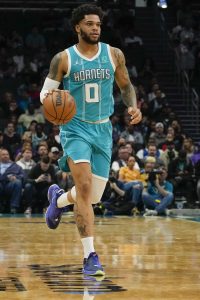The Timberwolves envisioned themselves as a solid playoff contender entering the 2021/22 season, but national expectations were modest — oddsmakers gave the team an over/under of 34.5 wins, and our readers voted they’d fall short of that mark.
It turned out the Wolves were right to be bullish about their outlook. Following a 24-25 start, Minnesota was one of the NBA’s best teams down the stretch, finishing the year on a 22-11 run for an overall record of 46-36. The club then won its first play-in contest to lock up the No. 7 seed and put a scare into the No. 2 Grizzlies in the first round of the playoffs, pushing the series to six hard-fought games.
A 46-win season and a first-round playoff exit would be a disappointment for some franchises, but it represented a major step forward in Minnesota, where the Timberwolves haven’t won a postseason series since 2004 and had finished below .500 in 15 of 16 seasons prior to 2021/22.
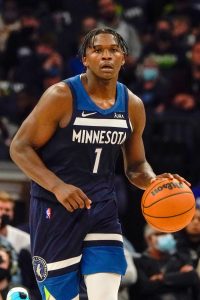 The last time the Wolves won as many as 46 games and made the playoffs, in 2018, the team came apart shortly thereafter, trading away star wing Jimmy Butler and firing head coach Tom Thibodeau partway through the following season. This time around, the Wolves are set up better for lasting success, with 2020’s first overall pick Anthony Edwards still on the ascent, a solid leadership group in place, and none of the team’s core players looking for a way out of Minnesota.
The last time the Wolves won as many as 46 games and made the playoffs, in 2018, the team came apart shortly thereafter, trading away star wing Jimmy Butler and firing head coach Tom Thibodeau partway through the following season. This time around, the Wolves are set up better for lasting success, with 2020’s first overall pick Anthony Edwards still on the ascent, a solid leadership group in place, and none of the team’s core players looking for a way out of Minnesota.
The Timberwolves’ Offseason Plan:
The Timberwolves’ offseason got off to an eventful start when they poached veteran basketball operations executive Tim Connelly from the division-rival Nuggets, hiring him to a five-year, $40MM contract to run their front office.
The addition of Connelly was a reflection of how far the franchise had come since the dismissal of Gersson Rosas, which occurred just ahead of the 2021/22 season amid rumors that Rosas had engaged in an inappropriate workplace relationship. At that time, the Timberwolves were the butt of the usual jokes, particularly due to the timing of the move, which occurred just before training camp got underway.
Eight months later, the Wolves were no longer a punchline, having put together an impressive coalition of front office talent that also includes executive VP of basketball operations Sachin Gupta – who took over from Rosas on an interim basis until Connelly’s arrival – and newly-hired senior VP of basketball operations Matt Lloyd, one of the league’s top scouting experts.
Incoming owners Alex Rodriguez and Marc Lore have spoken repeatedly about wanting to make the Wolves a top-flight organization, and their willingness to pay big money for an experienced, highly regarded executive like Connelly showed it wasn’t all talk.
One of Connelly’s first orders of business in Minnesota will be determining what to do with D’Angelo Russell, who is entering the final year of his maximum-salary contract. Russell has been up and down since arriving in Minnesota, displaying the offensive arsenal that made him an All-Star during his last season in Brooklyn, but also no-showing in big games – he scored more than 12 points just once in this year’s six playoff contests – and often exhibiting little resistance on defense.
Russell will earn $31.4MM in 2022/23, but he probably isn’t worth investing in at that price – or higher – going forward. On the other hand, he likely wouldn’t bring back a significant return on the trade market, and his close friendship with star center Karl-Anthony Towns shouldn’t be overlooked.
Unless the Wolves get unexpectedly impressed by a trade offer for Russell, it wouldn’t be a surprise if they try to negotiate an extension with him at a slightly lesser rate. Something in the neighborhood of the deals signed last summer by Mike Conley with Utah (three years, $68MM) or Lonzo Ball with Chicago (four years, $80MM) might make some sense for both sides.
Towns is also extension-eligible, having qualified for a super-max when he made the All-NBA Third Team this year — it seems likely the Wolves will put that offer on the table for him. It would be a four-year contract that begins in 2024/25 and would be worth 35% of that season’s cap, meaning it could well be worth in excess of $50MM per year.
That may seem like an exorbitant amount to pay a player who probably doesn’t rank among the NBA’s top 10 stars and may never break into that group, but the league’s salary cap continues to rise, and Minnesota isn’t exactly a premier free agent destination. If an All-NBA caliber player is willing to stick with the team long-term, the Wolves need to do what they can to make it happen.
If the Wolves retain Russell, Malik Beasley and his pseudo-expiring $15.6MM contract (he has a $16.5MM team option for 2023/24) might be their most logical salary-matching piece in any major trade. If the right two-way threat is available on the trade market, Beasley and the No. 19 pick would be a good starting point for an outgoing package.
But the Wolves won’t be looking to give Beasley away. He has been one of their top three-point threats since arriving in Minnesota (.389 3PT%) and can hold his own on defense. It’s also worth noting that Connelly was part of the Nuggets front office that drafted Beasley in the first round of 2016, so the new president of basketball operations will likely feel some form of attachment to the 25-year-old.
While their roster will get more expensive in future seasons, the Wolves still have the flexibility to re-sign Taurean Prince, a useful contributor at forward, and pursue another rotation player using their mid-level exception. I’d expect any new contracts Minnesota completes with role players this summer to span no more than one or two seasons, allowing the team to maintain some flexibility for 2024, when pricey new deals for Towns and Edwards would go into effect.
If the Wolves hang onto the No. 19 pick, they should feel encouraged by Connelly’s track record of finding diamonds in the rough later on in the draft. He can’t realistically be expected to top his selection of Nikola Jokic (No. 41 overall in 2014), but Beasley, Monte Morris, Zeke Nnaji, and Bones Hyland are among the players Connelly’s Nuggets have drafted at No. 19 or later since 2016.
Minnesota also has three second-round picks between Nos. 40 and 50, at least a couple of which could traded for other assets, since the club doesn’t have four roster spots to hand to rookies.
Salary Cap Situation
Note: Our salary cap figures are based on the league’s latest projection ($122MM) for 2022/23.
Guaranteed Salary
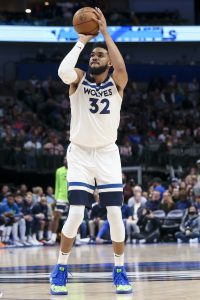 Karl-Anthony Towns ($33,833,400)
Karl-Anthony Towns ($33,833,400)- D’Angelo Russell ($31,377,750)
- Malik Beasley ($15,558,035)
- Patrick Beverley ($13,000,000)
- Anthony Edwards ($10,733,400)
- Jarred Vanderbilt ($4,374,000)
- Leandro Bolmaro ($2,471,160)
- Jaden McDaniels ($2,161,440)
- Jordan McLaughlin ($2,160,000)
- Total: $115,669,185
Player Options
- None
Team Options
- Jaylen Nowell ($1,930,681): Bird rights 1
- Naz Reid ($1,930,681): Bird rights 2
- Total: $3,861,362
Non-Guaranteed Salary
- None
Restricted Free Agents
- Josh Okogie ($5,857,966 qualifying offer / $12,263,712 cap hold): Bird rights
- Total (cap holds): $12,263,712
Two-Way Free Agents
- Nathan Knight ($1,616,044 cap hold): Non-Bird rights
- McKinley Wright IV ($1,616,044 cap hold): Non-Bird rights
- Total: $3,232,088
Draft Picks
- No. 19 overall pick ($3,006,840)
- No. 40 overall pick (no cap hold)
- No. 48 overall pick (no cap hold)
- No. 50 overall pick (no cap hold)
- Total: $3,006,840
Extension-Eligible Players
Note: These are players who are either already eligible for an extension or will become eligible before the 2022/23 season begins.
- Malik Beasley (veteran)
- Jaylen Nowell (veteran) 3
- Naz Reid (veteran) 3
- D’Angelo Russell (veteran)
- Karl-Anthony Towns (veteran)
Unrestricted Free Agents / Other Cap Holds
- Evan Turner ($27,909,834 cap hold): Bird rights 4
- Taurean Prince ($20,001,563 cap hold): Bird rights
- Jake Layman ($7,486,350 cap hold): Bird rights
- Aaron Brooks ($1,811,516 cap hold): Non-Bird rights 4
- Greg Monroe ($1,811,516 cap hold): Non-Bird rights
- Total: $59,020,779
Offseason Cap Outlook
If we assume the Wolves bring back their nine players on guaranteed contracts, plus Nowell, Reid, and their first-round pick, they’d be just over the projected cap at $122.5MM for 12 players. That would give them plenty of room below the projected tax line ($149MM) to re-sign Prince and use their full mid-level exception — and possibly even their bi-annual exception, depending on Prince’s price tag.
Cap Exceptions Available
- Mid-level exception: $10,349,000 5
- Bi-annual exception: $4,050,000 5
- Trade exception: $4,750,000
Footnotes
- Nowell’s salary will remain non-guaranteed even if his option is exercised.
- Reid’s salary will remain non-guaranteed until July 20 even if his option is exercised.
- Nowell and Reid would only be eligible if their options are exercised.
- The cap holds for Turner and Brooks remain on the Timberwolves’ books from prior seasons because they haven’t been renounced. They can’t be used in a sign-and-trade deal.
- These are projected values.
Salary and cap information from Basketball Insiders and RealGM was used in the creation of this post.
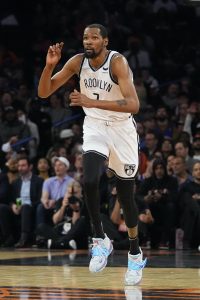 Harden dealt with conditioning and hamstring issues, and reportedly became frustrated by Irving’s inconsistent availability and the Nets’ struggles in Durant’s absence, ultimately requesting a trade prior to February’s deadline. Health problems also impacted
Harden dealt with conditioning and hamstring issues, and reportedly became frustrated by Irving’s inconsistent availability and the Nets’ struggles in Durant’s absence, ultimately requesting a trade prior to February’s deadline. Health problems also impacted 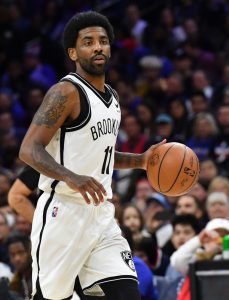
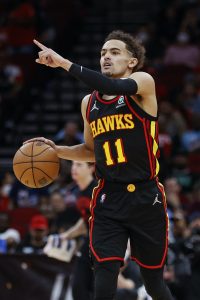 Unfortunately for the Hawks, the Eastern Conference was far more competitive in 2022 than it was a year earlier, and even after winning a pair of play-in games, they ran into a less favorable first-round playoff matchup this time around. The Heat’s defense forced
Unfortunately for the Hawks, the Eastern Conference was far more competitive in 2022 than it was a year earlier, and even after winning a pair of play-in games, they ran into a less favorable first-round playoff matchup this time around. The Heat’s defense forced 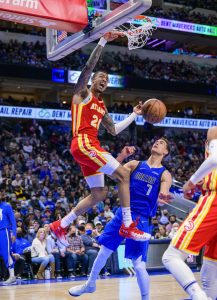
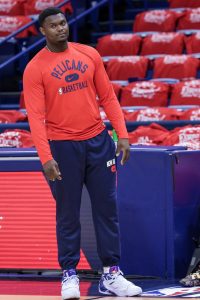 That doesn’t mean the front office can just sit back and enjoy a lengthy summer vacation, of course. The Pelicans still have a handful of big decisions to make, starting with how aggressively to pursue an offseason extension for Williamson.
That doesn’t mean the front office can just sit back and enjoy a lengthy summer vacation, of course. The Pelicans still have a handful of big decisions to make, starting with how aggressively to pursue an offseason extension for Williamson.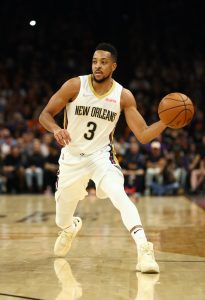
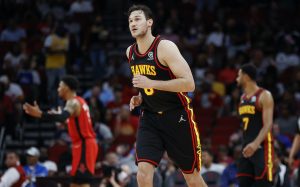 Since over-the-cap teams must
Since over-the-cap teams must 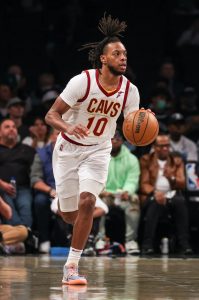 It was a disappointing finish to the year, since getting some best-of-seven playoff experience against a team like the Heat or Bucks would have been a huge step for young players like
It was a disappointing finish to the year, since getting some best-of-seven playoff experience against a team like the Heat or Bucks would have been a huge step for young players like 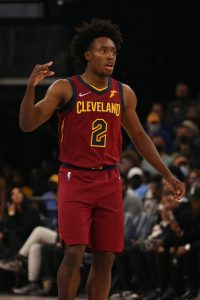
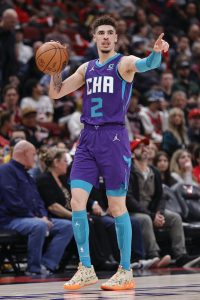 Ideally, Charlotte would want a coach capable of maximizing
Ideally, Charlotte would want a coach capable of maximizing 